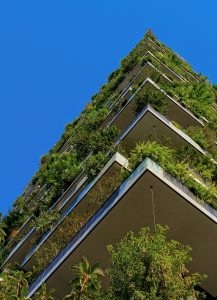Introduction
When I first stumbled upon the term “sustainable fabrics,” my initial reaction was a mix of intrigue and skepticism. How can fabric be sustainable? Isn’t it just something we wear? But boy, how wrong I was. Little did I know, my journey into the world of sustainable fabrics was just beginning, and it has since opened my eyes to a whole new perspective on fashion.
Have you ever pondered over the clothes you wear? Do you know where they come from, how they are made, and their impact on our planet? If you are like most people, these questions might not have crossed your mind until recently. As a fashion enthusiast and a responsible citizen of the world, I took a deep dive into the fabric of our clothes, and what I found was a mix of exhilaration and dread.
There’s the alarming side of the coin – the conventional textile industry – which ranks among the leading causes of environmental degradation worldwide. However, on the brighter side, there’s the rise of a movement that promises change – sustainable fabrics and the growing use of eco friendly materials.
Sustainable fabrics offer an alternative to traditional textiles, a path that allows us to express our style without sacrificing the health of our planet. So, let’s delve deeper into this fascinating world and see why it’s a bandwagon worth jumping on.
Understanding the Concept of Sustainable Fabrics
The term “sustainable fabrics” has gradually become part of our vocabulary over the past few decades. The exact origin of the phrase is not widely documented, but it has arisen alongside growing awareness of environmental issues and sustainability. It’s part of a broader discussion that includes concepts like “slow fashion,” “ethical fashion,” and “conscious consumerism.
The Problem with Traditional Fabrics
You see, traditionally, fabric production has a heavy environmental footprint. From vast water usage in cotton cultivation to pollution caused by synthetic materials, the fashion industry is a significant contributor to environmental degradation. Ever wondered where that old polyester shirt ends up when you throw it away? Well, it doesn’t just disappear. It clogs up our landfills and oceans, taking hundreds of years to decompose. Sounds alarming, right?
When we compare sustainable fabrics to traditional ones, the differences become stark. For instance, regular cotton is notorious for its environmental footprint. It’s estimated to consume approximately 20% of the world’s irrigation water, often treated with pesticides that harm the environment and the farmers who cultivate it.
On the other hand, synthetic fabrics like polyester, while durable and easy to care for, are petroleum-based and non-biodegradable. They also shed microplastics during washing, which end up in our waterways and oceans.
The Essence of Sustainable Fabrics
That’s where sustainable fabrics come into the picture. These materials have minimized environmental impact, often derived from recycled or renewable resources. They’re the superheroes of the fabric world, combating environmental harm one thread at a time. Now, this is a concept I can get behind!
In contrast, sustainable fabrics prioritize environmental health and resource conservation. They strive to address the negatives associated with traditional fabric production, such as excessive water usage, pollution, and harmful chemicals.
The Variety of Sustainable Fabrics
Organic Cotton
Let’s dive into some examples, shall we? First up is organic cotton. This is your traditional cotton’s more eco-friendly sibling. It’s cultivated without harmful pesticides and requires less water, making it a win-win for our dear Earth.
Hemp
Next in line is hemp. This one’s a real workhorse. It’s a fast-growing crop that requires minimal water and no pesticides. What’s more, it even improves the soil as it grows. Talk about a team player!
Bamboo
Then we have bamboo, a star player in the sustainable fabric league. This super plant regenerates quickly and requires minimal water. Plus, it’s biodegradable! When your bamboo clothing’s life ends, it returns to the earth, completing the cycle beautifully.
Linen
Lastly, there’s linen made from the sturdy flax plant. This guy’s another tough one, growing happily in poor-quality soil and requiring little water.
When we dig deeper into each type of sustainable fabric, its benefits become apparent. Organic cotton, for example, is produced under stringent regulations prohibiting synthetic pesticides and fertilizers. With its minimal needs and soil-enriching properties, hemp offers a sustainable alternative that can help crop rotation and soil conservation.
Bamboo and linen, on the other hand, are excellent examples of how nature can provide us with eco-friendly resources. The quick regrowth of bamboo makes it a renewable resource, while linen’s toughness allows it to thrive even in poor-quality soil.
The Benefits of Sustainable Fabrics
Environmental Benefits
All these sustainable fabrics bring a bunch of environmental benefits to the table. They reduce water usage, lower pollution, improve soil quality, and promote biodiversity. It’s like hitting the environmental jackpot!
Health Benefits
But wait, there’s more! Sustainable fabrics are also healthier for you. They’re often hypoallergenic and free from harmful chemicals that can irritate your skin.
The list of benefits that sustainable fabrics offer goes beyond their minimal environmental impact. These materials often have superior qualities, such as being hypoallergenic, breathable, and biodegradable. Plus, they often come with certifications that guarantee ethical production processes, contributing to social sustainability as well.
Challenges Faced by Sustainable Fabrics
While sustainable fabrics are a step in the right direction, they’re not without challenges. The main hurdle is cost – it’s often more expensive to produce these fabrics than their traditional counterparts.
Despite these benefits, the higher cost of sustainable fabrics can deter consumers and manufacturers alike. These fabrics often require more intensive labor and stricter quality controls, increasing prices. However, as demand increases and more sustainable practices are adopted industry-wide, we can hope these costs will decrease over time.
How to Make Sustainable Choices in Fashion
Buying Second-hand Clothes
Yet, you can still support sustainable fashion brands even if you’re on a budget. How about thrifting? It’s a fantastic way to reduce demand for new clothes and give a second life to existing ones.
Supporting Brands that Use Sustainable Fabrics
When buying new, consider supporting brands that use sustainable fabrics; even a small change in consumer behavior can create a big impact.
As consumers, we have a considerable influence on the fashion industry. By buying second-hand or from brands prioritizing sustainability, we signal the demand for more eco-friendly practices.
Many brands are stepping up to this call. Patagonia, for example, has long championed sustainable and ethical practices. They use recycled materials and organic cotton in many of their products and promote repair and recycling through their Worn Wear program.
Similarly, Eileen Fisher is a brand committed to sustainability, offering a line of garments made entirely from organic linen and cotton. They also have a take-back program, encouraging customers to return their old Eileen Fisher clothes for recycling or resale.
The Future of Sustainable Fabrics
The future of sustainable fabrics looks promising. With technological advancements and increasing consumer awareness, we’re slowly heading towards a more eco-friendly fashion world.
As we look forward to the future, sustainable fabrics stand poised to redefine the fashion industry. More and more brands are integrating sustainable fabrics into their collections, and research is ongoing to develop new, even more, eco-friendly materials. This blend of innovation and environmental stewardship promises a greener, more conscious future for fashion.
While we’re still at the dawn of the sustainable fabric revolution, its potential is undeniable. Advancements in material science are uncovering new possibilities for eco-friendly textiles, from fabrics made from recycled plastic bottles to those grown in a lab using microorganisms. The fashion industry is at the cusp of a seismic shift, and sustainable fabrics – including those used for sustainable bedding – are at its heart.
Conclusion
Sustainable fabrics are more than just a trend; they’re a lifestyle choice that reflects our commitment to the environment. It’s not about perfection but about making better choices one step at a time. So next time you’re shopping for a new outfit, give sustainable fabrics a chance. You might just fall in love like I did.
As we conclude, it’s essential to note that adopting sustainable fabrics isn’t just a fleeting trend. It’s a profound transformation of an industry known for its environmental footprint, signaling a societal shift towards sustainable living.
We’re moving from an era of fast fashion, where clothes are worn a few times and discarded, to an age of conscious consumerism. It’s an exciting time to be a part of the fashion industry and an even more exciting to be a consumer.
Sustainable fabrics may not be perfect, but they signify progress. They mark the willingness of consumers to make more conscious decisions and the readiness of businesses to support sustainability. This momentum builds hope for a greener and more sustainable future for fashion and our planet.
Are you ready to join this revolution?
FAQs
1. What makes a fabric sustainable?
A fabric is considered sustainable if its production process minimizes environmental impact. This might mean using less water, avoiding harmful pesticides, or being derived from renewable resources.
2. Are sustainable fabrics more expensive?
While producing sustainable fabrics can be more costly, the long-term environmental benefits outweigh the initial costs.
3. Can sustainable fabrics be as comfortable as traditional fabrics?
Absolutely! Many sustainable fabrics like organic cotton or bamboo are known for their softness and comfort.
4. What can I do to support sustainable fashion?
Consider buying second-hand clothes or supporting brands that use sustainable fabrics. Even small changes can make a big difference.
5. What’s the future of sustainable fabrics?
The future looks bright! With increasing consumer awareness and technological advancements, sustainable fabrics are becoming more accessible and mainstream.
6. How does the durability of sustainable fabrics compare to conventional ones?
While the durability can vary based on the specific type of fabric and care given, many sustainable fabrics like hemp and organic cotton are known for their strength and longevity.
7. Can I find sustainable fabrics in mainstream stores?
Yes, more and more mainstream brands are incorporating sustainable fabrics into their collections. Always check the product details for information about the materials used.
8. How can I be sure a fabric is genuinely sustainable?
Look for certifications like GOTS (Global Organic Textile Standard) or OEKO-TEX. These certifications ensure the fabrics meet certain environmental and social standards.
9. Can sustainable fabrics be dyed and printed like traditional ones?
Yes, sustainable fabrics can be dyed and printed just like conventional ones. However, it’s important to note that eco-friendly dyes should be used for a product to remain sustainable.
10. Are sustainable fabrics suitable for all types of clothing?
Absolutely. From sportswear to formal attire, sustainable fabrics can create various clothing styles and types.





Pingback: Navigating the World of Sustainable Clothing Brands
Pingback: Eco Friendly Companies: Meet the Eco Super Heroes
Pingback: Sustainable Swimwear: A Deep Dive Into Eco Friendly Choices
Pingback: Eco Friendly Gifts: A Sustainable Guide - Eco Life Wise
Pingback: Upcycled Clothing: The Journey From Landfill to Runway
Pingback: Sustainable Fashion Brands: Redesigning Style Responsibly
Pingback: Upcycled Clothes: The Art Of Renewing Your Wardrobe | Eco Life Wise
Pingback: Unlock the Secret to Affordable Sustainable Clothing
Pingback: World Environment Day: A Deep Dive | Eco Life Wise
Pingback: What Is Sustainable Fashion? 9 Interesting Definitions | Eco Life Wise
Pingback: Vegan Shoes: 10 Little Known Facts to Get You Excited | Eco Life Wise